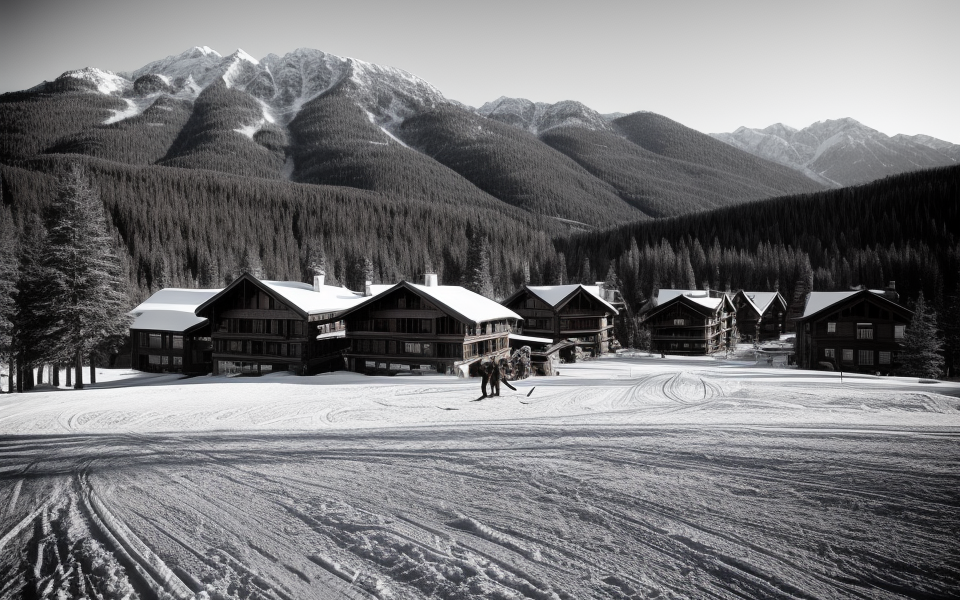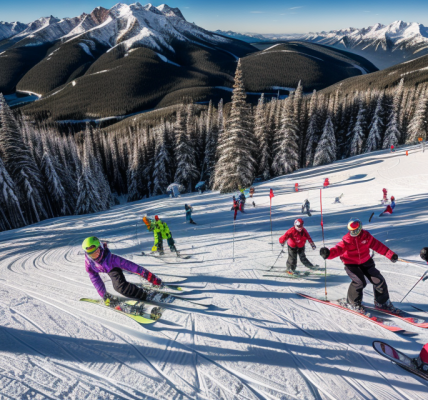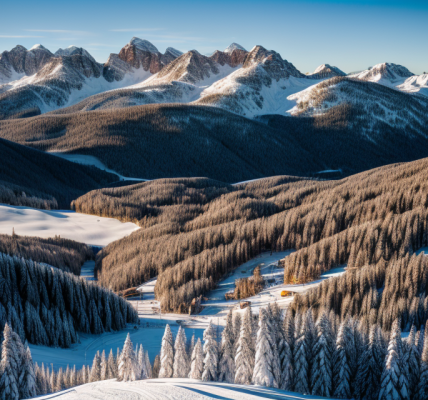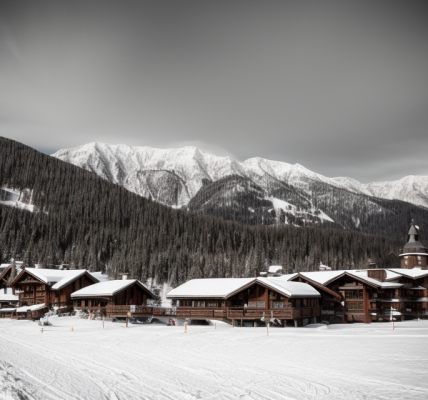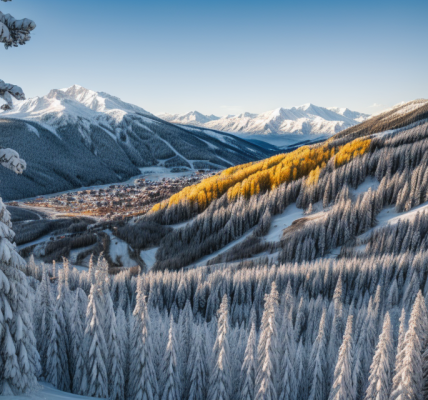Skiing has been a popular sport in America for over a century, and with its vast mountain ranges and stunning landscapes, it’s no wonder that the country is home to some of the world’s most iconic ski resorts. But which one can lay claim to being the oldest? Join us on a historical exploration as we delve into the rich history of America’s ski resorts and uncover the story of the resort that has been welcoming skiers for over a hundred years. From its humble beginnings to its evolution into a world-class destination, this is the fascinating tale of the oldest ski resort in America.
The oldest ski resort in America is considered to be the Nansen Ski Club, located in the Berkshires in western Massachusetts. The club was founded in 1909 by a group of ski enthusiasts, including the famed explorer Roald Amundsen, who was the first person to reach the South Pole. The Nansen Ski Club was one of the first ski clubs in the United States and played a significant role in the development of skiing in the country. The club’s rich history and traditional skiing atmosphere make it a popular destination for skiers looking to experience the sport’s early American roots.
The birthplace of American skiing: Stowe Mountain Resort
A brief history of Stowe Mountain Resort
In the late 1800s, Stowe Mountain Resort was established as a summer retreat for affluent families from the east coast. It was during this time that the sport of skiing began to take root in the United States, and Stowe Mountain Resort quickly became a hub for ski enthusiasts.
The founding of Stowe Mountain Resort can be traced back to 1884, when a group of investors led by Charles M. Proctor purchased land in Stowe, Vermont with the intention of creating a resort community. Proctor, a successful businessman from New York City, saw the potential for Stowe to become a popular destination for city dwellers seeking a summer escape.
The early years of Stowe Mountain Resort were characterized by a slow but steady growth in popularity. The resort’s location, nestled in the Green Mountains, offered a picturesque setting for outdoor activities such as hiking and fishing. However, it was the arrival of the ski club, the Stowe Hoppers, in the early 1900s that truly put Stowe on the map as a ski destination.
The Stowe Hoppers, a group of young skiers from Vermont and neighboring states, were instrumental in popularizing the sport of skiing in the United States. They would travel to Stowe each winter to ski the slopes and share their passion for the sport with others. The Stowe Hoppers’ influence helped to establish Stowe Mountain Resort as a premier destination for skiing in the United States.
Over the years, Stowe Mountain Resort has continued to evolve and expand. Today, it boasts a wide range of ski trails, as well as amenities such as lodging, dining, and shopping. However, it remains deeply rooted in its history as the birthplace of American skiing, and continues to be a destination for ski enthusiasts from around the world.
The evolution of Stowe Mountain Resort
Transformation from a small ski club to a world-class resort
Stowe Mountain Resort, nestled in the picturesque Green Mountains of Vermont, has a rich and storied history. Established in 1940 as a small ski club, it has since evolved into one of the most renowned ski resorts in the United States. The transformation from a modest ski club to a world-class resort can be attributed to a combination of factors, including the visionary leadership of its founders, the relentless pursuit of excellence, and the ever-evolving needs and desires of its patrons.
One of the key figures in the early history of Stowe Mountain Resort was the legendary skier, Gordon L. “Buff” Glover. Glover, a native of nearby Barre, Vermont, was a skiing prodigy who had won multiple national championships in the 1930s. He went on to become a pioneering figure in the development of Stowe Mountain Resort, serving as its first director and overseeing its expansion into a world-class destination.
Under Glover’s guidance, the resort rapidly expanded its infrastructure, with the construction of a network of ski trails, lifts, and lodges. The resort’s reputation grew steadily, as word spread of the exceptional skiing conditions and the stunning natural beauty of the surrounding landscape. The 1930s and 1940s saw a surge in popularity for winter sports, and Stowe Mountain Resort was well-positioned to capitalize on this trend.
The impact of the 1960s ski boom on Stowe Mountain Resort
The 1960s marked a pivotal period in the evolution of Stowe Mountain Resort. This was a time of unprecedented growth and transformation for the ski industry as a whole, and Stowe was no exception. The decade saw a surge in interest in skiing, driven in part by the emergence of new technologies and the growing accessibility of skiing to a wider range of people.
As the popularity of skiing continued to soar, Stowe Mountain Resort underwent a series of significant expansions and improvements. New lifts were constructed, and the resort’s ski trails were lengthened and improved. In 1964, the resort hosted the alpine skiing events for the Winter Olympics, further elevating its profile and cementing its status as a premier destination for ski enthusiasts.
During this period, Stowe Mountain Resort also began to attract attention from outside the skiing community. Celebrities, politicians, and other notables began to frequent the resort, further burnishing its reputation as a place of luxury and exclusivity. This, in turn, led to increased investment in the resort, as owners sought to capitalize on its growing cachet.
Today, Stowe Mountain Resort remains a beloved destination for skiers and snowboarders from around the world. Its rich history and tradition of excellence continue to draw visitors, who come to experience the thrill of skiing in a setting steeped in history and natural beauty.
The modern era of Stowe Mountain Resort
Stowe Mountain Resort has experienced a significant transformation in recent years, as it continues to evolve and adapt to the changing needs and desires of its visitors. In this section, we will explore some of the key expansion and development projects that have taken place at the resort in recent years, as well as its current place in the ski industry.
Recent expansion and development projects
One of the most notable recent developments at Stowe Mountain Resort was the opening of the new Spruce Peak at Stowe Mountain Resort in 2017. This $200 million project, which took more than a decade to complete, included the construction of a new village with luxury condominiums, a hotel, and a variety of dining and retail options. The development also included the installation of a new high-speed quad chairlift, which provides access to more than 400 acres of new terrain for skiers and riders of all abilities.
Another major project at the resort in recent years was the renovation of the historic Toll House Inn, which first opened in 1939 and has since become an iconic part of the Stowe Mountain Resort experience. The $25 million project, which was completed in 2018, included the addition of 10 new guest rooms, a new spa and fitness center, and a variety of dining options. The renovation also preserved many of the original features of the building, including its distinctive art deco design and its classic ski-themed murals.
Stowe Mountain Resort’s place in the ski industry today
Despite its long and storied history, Stowe Mountain Resort remains a vital and innovative player in the modern ski industry. With its diverse range of terrain, its extensive network of lifts and trails, and its commitment to sustainability and environmental stewardship, the resort has managed to maintain its position as one of the most popular and respected ski destinations in the country.
In addition to its impressive on-mountain offerings, Stowe Mountain Resort has also become known for its excellent off-mountain amenities and activities, including its award-winning spa, its numerous dining options, and its rich cultural and historical attractions. Whether you’re a beginner skier looking for your first taste of the sport, or an experienced athlete seeking new challenges and adventures, Stowe Mountain Resort has something to offer for everyone.
Skiing in the early days: The Warming Hut at Stowe
The history of The Warming Hut
Origins as a small cabin for skiers to warm up
The Warming Hut, nestled at the base of the slopes in Stowe, Vermont, holds a unique place in the history of American skiing. Originally, it was nothing more than a small cabin that served as a refuge for skiers to warm up by the fire. This modest structure, built in the early 1930s, was a far cry from the sprawling ski resorts of today. Nevertheless, it played a crucial role in the development of ski culture in the United States.
Evolution into a beloved ski culture hub
Over the years, The Warming Hut grew and evolved along with the sport of skiing. It became a hub for skiers to gather, share stories, and plan their next runs. As the popularity of skiing in Stowe increased, so did the importance of The Warming Hut. It was here that skiers from all walks of life would come together, bonding over their shared love of the sport.
In the post-World War II era, Stowe emerged as a major ski destination, and The Warming Hut continued to play a central role in the community. The ski resorts of today owe much to the early pioneers of the sport, and The Warming Hut serves as a tangible link to that bygone era.
The Warming Hut’s role in the development of American skiing
The importance of gathering places for skiers
In the early days of skiing in America, gathering places for skiers were crucial to the development of the sport. These places provided opportunities for skiers to socialize, share their experiences, and learn from one another. The Warming Hut at Stowe Mountain Resort was one such gathering place that played a significant role in the development of American skiing.
The Warming Hut’s impact on the ski culture at Stowe Mountain Resort
The Warming Hut, built in 1938, was initially designed as a simple structure to provide skiers with a place to warm up and socialize. However, over time, it became an essential part of the ski culture at Stowe Mountain Resort. The Warming Hut served as a meeting place for skiers, where they could share their experiences, exchange tips, and plan their next runs. It was also a place where skiers could warm up, have a snack, and enjoy a hot drink after a long day on the slopes.
The Warming Hut’s impact on the ski culture at Stowe Mountain Resort was significant. It helped to create a sense of community among skiers, fostering a shared passion for the sport. The Warming Hut was also a symbol of the resort’s commitment to providing a great experience for its guests, and it helped to establish Stowe Mountain Resort as one of the premier ski destinations in the country.
Today, the Warming Hut remains an essential part of the ski culture at Stowe Mountain Resort, and it continues to serve as a gathering place for skiers, providing a warm and welcoming atmosphere for all who visit.
The Warming Hut today: preserving ski history
- Restoration efforts to maintain the historic structure
- Collaboration between preservationists, ski resort management, and local community
- Regular inspections and maintenance to ensure structural integrity
- The significance of The Warming Hut in modern ski culture
- A symbol of the sport’s rich history and evolution
- A place for visitors to connect with the past and appreciate the origins of skiing
- An opportunity for education and interpretation of skiing’s history
- Provides a sense of continuity and tradition for skiers and visitors alike
- Acts as a reminder of the importance of preserving cultural heritage in the sport of skiing.
Other notable early ski resorts in America
The birth of skiing in the United States
The origins of skiing in the United States can be traced back to the late 19th century, when Norwegian immigrants introduced the sport to the country. These early skiers were primarily concentrated in the northeastern states, particularly in New England.
One of the earliest ski resorts in the US was the Stowe Ski Club, established in 1915 in Stowe, Vermont. The club was founded by a group of enthusiasts who shared a passion for the sport and wanted to create a space for others to enjoy it as well. The club’s founders built a small ski lift and groomed trails, which attracted a growing number of skiers over the years.
Another notable early ski resort was the Minneapolis Ski Club, established in 1905 in Minneapolis, Minnesota. The club was formed by a group of Norwegian immigrants who wanted to share their love of skiing with others. They built a small ski hill near the city and hosted ski races and other events to promote the sport.
The development of skiing as a popular sport in America was slow at first, but it gained momentum in the early 20th century as more people became interested in the sport. Ski clubs and resorts continued to pop up across the country, and by the 1930s, skiing had become a popular pastime for many Americans.
Today, the United States is home to hundreds of ski resorts, from small, family-run operations to large, luxury destinations. The sport continues to grow in popularity, with millions of people enjoying the thrill of skiing each year.
Tahoe’s skiing pioneers: Squaw Valley and Alpine Meadows
The history of Squaw Valley and Alpine Meadows
Squaw Valley and Alpine Meadows, located in the Sierra Nevada mountains of California, are two of the oldest and most well-known ski resorts in the United States. Both resorts were founded in the early 20th century and have played a significant role in the development of skiing in the United States.
Squaw Valley was founded in 1946 by a group of investors led by Alexander Cushing, who had a vision of creating a world-class ski resort in the Sierra Nevada mountains. The resort opened to the public in 1947 and quickly gained a reputation as one of the best ski destinations in the country.
Alpine Meadows, on the other hand, was founded in 1961 by a group of skiers and investors who saw the potential for a second ski resort in the Tahoe area. The resort opened to the public in 1961 and has since become known for its challenging terrain and beautiful views.
The impact of these resorts on the growth of skiing in the US
Squaw Valley and Alpine Meadows have had a significant impact on the growth of skiing in the United States. The resorts have been instrumental in popularizing the sport and have helped to establish the United States as a major player in the world of skiing.
Both resorts have hosted numerous international ski competitions, including the 1960 Winter Olympics, which were held at Squaw Valley. This event helped to raise the profile of skiing in the United States and solidified the country’s reputation as a top destination for winter sports.
In addition to their impact on the sport of skiing, Squaw Valley and Alpine Meadows have also had a significant impact on the local economy. The resorts have created thousands of jobs and have helped to attract tourists to the Tahoe area, which has become a popular destination for winter sports enthusiasts from around the world.
Overall, the history of Squaw Valley and Alpine Meadows is a testament to the enduring appeal of skiing in the United States and the important role that these resorts have played in the development of the sport.
The rise of skiing in the northeast: Stowe and beyond
The development of skiing in the northeastern United States
The northeastern United States played a pivotal role in the development of skiing in America. The region’s geography, with its rugged mountains and abundant snowfall, provided the ideal conditions for the sport to take root and flourish. The early 20th century saw a surge of interest in skiing among the wealthy elite of the Northeast, who saw it as a way to demonstrate their social status and physical prowess. This led to the establishment of several early ski resorts in the region, which in turn helped to popularize the sport and lay the groundwork for its eventual widespread adoption across the country.
The importance of Stowe and other early resorts in shaping the ski industry
Stowe, located in Vermont, was one of the earliest and most influential ski resorts in the northeastern United States. Founded in 1940 by Charles and Marion Proctor, Stowe quickly gained a reputation as a world-class destination for skiers and snowboarders, thanks to its challenging terrain, abundant snowfall, and top-notch facilities. The resort’s success helped to establish Vermont as a major player in the ski industry, and its influence can still be felt today.
Other early ski resorts in the Northeast, such as Mount Snow in Vermont and Sugarbush in Vermont, also played important roles in the development of the sport. These resorts, along with Stowe, helped to popularize skiing and set the stage for its eventual expansion to other parts of the country. Today, the Northeast remains a hub of the ski industry, with dozens of world-class resorts drawing visitors from around the globe.
FAQs
1. What is the oldest ski resort in America?
The oldest ski resort in America is a matter of debate, but the two contenders that have the strongest claims are Stowe Mountain Resort in Vermont and Mad River Glen in Vermont. Both resorts have a rich history that dates back to the late 1800s and have been popular destinations for skiers and snowboarders for over a century.
2. What makes Stowe Mountain Resort the oldest ski resort in America?
Stowe Mountain Resort in Vermont can stake a claim to being the oldest ski resort in America due to its long history and the fact that it was one of the first ski resorts in the country to offer ski lifts. The resort was founded in 1940, but its roots can be traced back to the 1800s when the first ski club in the United States was established in Stowe. Over the years, the resort has hosted numerous ski competitions and has been visited by many famous skiers, including Olympic gold medalists.
3. What makes Mad River Glen the oldest ski resort in America?
Mad River Glen in Vermont can also stake a claim to being the oldest ski resort in America. The resort was founded in 1947, but its history can be traced back to the early 1900s when the first ski club in the state was established nearby. Mad River Glen is known for its unique single-seat chairlift, which is the last of its kind in the country, and its challenging terrain, which attracts expert skiers from around the world.
4. How has the oldest ski resort in America evolved over time?
The oldest ski resort in America has evolved significantly over time. In the early days, skiers had to hike up the mountain and ski down on unmarked trails. As the popularity of skiing grew, small ski areas were developed, and the first ski lifts were introduced. Today, ski resorts are equipped with modern lifts, well-groomed trails, and a variety of amenities, including lodging, dining, and entertainment options.
5. What makes the oldest ski resort in America significant?
The oldest ski resort in America is significant because it represents the rich history and tradition of skiing in the United States. The resorts have been popular destinations for generations of skiers and snowboarders, and they have played an important role in the development of the sport. They have also contributed to the growth of the ski industry and have helped to establish the United States as a leading destination for winter sports.
